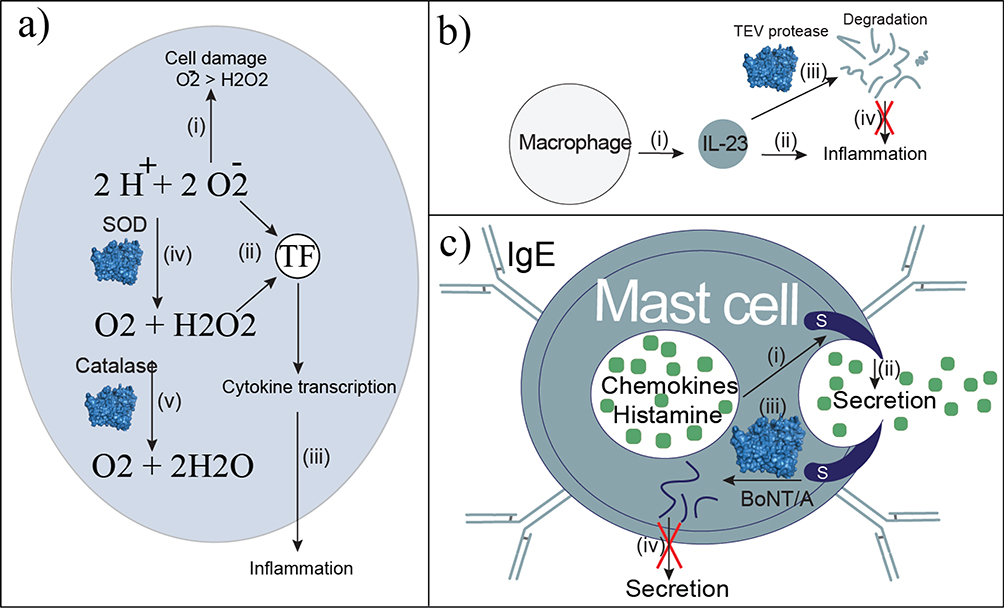Figure 7.
Anti-inflammatory enzyme therapies. (a) Reactive oxygen species (ROS) cause cell damage and death (i) with the superoxide anion being more reactive than hydrogen peroxide. Both ROS activate the transcription factor (TF) NF-κb (ii), which activates proinflammatory cytokine production. Cytokine release (iii) signals the inflammatory response. The enzyme therapy superoxide dismutase (SOD) converts the superoxide anion into oxygen and hydrogen peroxide (iv), which is less harmful, and limits cytokine transcription. Catalase converts hydrogen peroxide into oxygen and water, which is nontoxic and does not activate inflammatory cytokine transcription. (b) Macrophages produce IL-23 (i), which contributes to inflammation in rheumatoid arthritis (ii). Engineered Tobacco Etch Virus (TEV) protease degrades IL-23 (iii) to disrupt inflammation. (c) Cytokine release is dependent on SNAP-23 located within mast cells (i). Secretion of chemokines and histamine (ii) leads to inflammation and allergic reactions. Engineered botulinum neurotoxin type A (BoNT/A) degrades SNAP-23 (iii). Without SNAP-23, secretion is blocked (iv).

